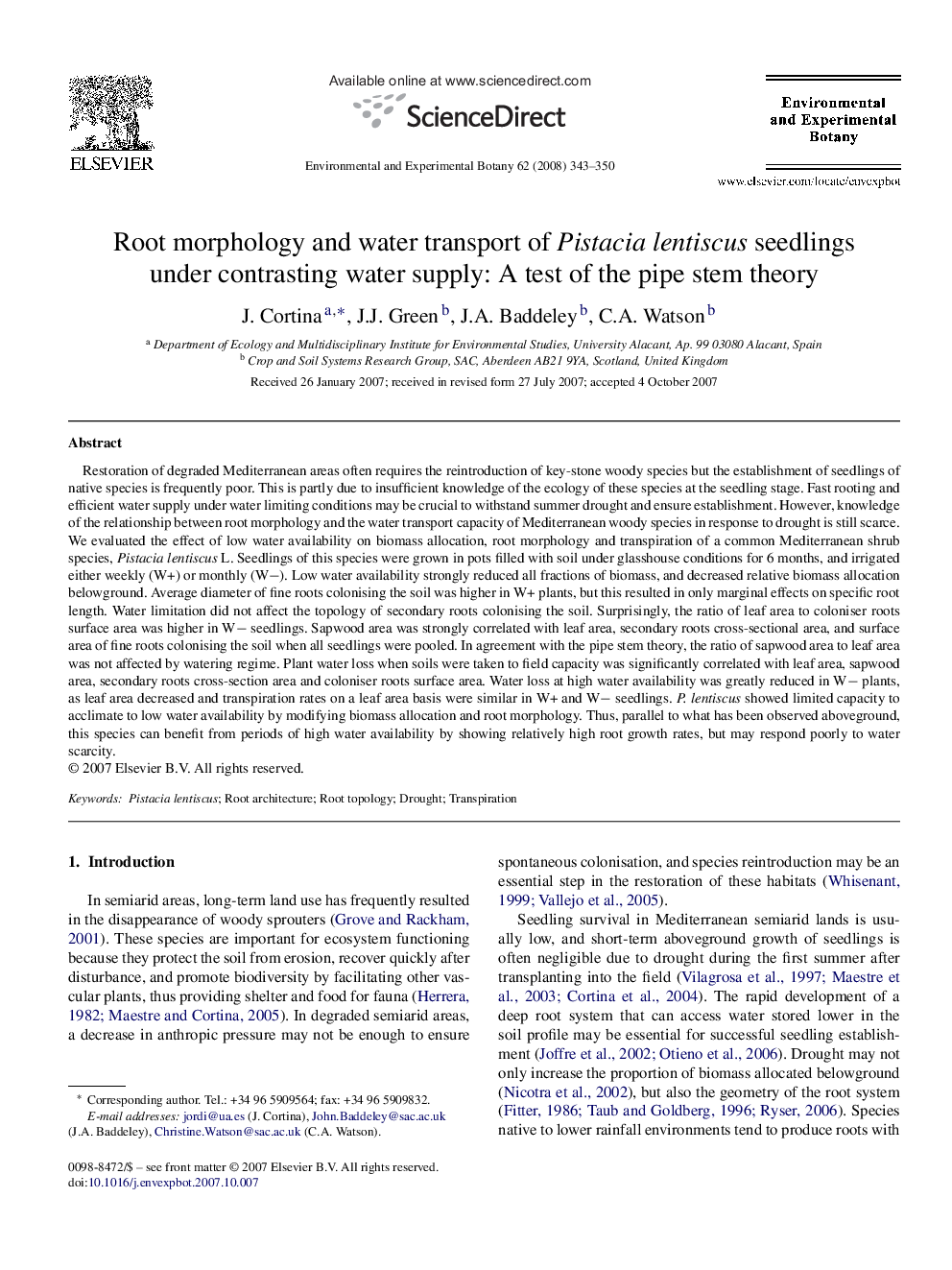| Article ID | Journal | Published Year | Pages | File Type |
|---|---|---|---|---|
| 4555445 | Environmental and Experimental Botany | 2008 | 8 Pages |
Restoration of degraded Mediterranean areas often requires the reintroduction of key-stone woody species but the establishment of seedlings of native species is frequently poor. This is partly due to insufficient knowledge of the ecology of these species at the seedling stage. Fast rooting and efficient water supply under water limiting conditions may be crucial to withstand summer drought and ensure establishment. However, knowledge of the relationship between root morphology and the water transport capacity of Mediterranean woody species in response to drought is still scarce. We evaluated the effect of low water availability on biomass allocation, root morphology and transpiration of a common Mediterranean shrub species, Pistacia lentiscus L. Seedlings of this species were grown in pots filled with soil under glasshouse conditions for 6 months, and irrigated either weekly (W+) or monthly (W−). Low water availability strongly reduced all fractions of biomass, and decreased relative biomass allocation belowground. Average diameter of fine roots colonising the soil was higher in W+ plants, but this resulted in only marginal effects on specific root length. Water limitation did not affect the topology of secondary roots colonising the soil. Surprisingly, the ratio of leaf area to coloniser roots surface area was higher in W− seedlings. Sapwood area was strongly correlated with leaf area, secondary roots cross-sectional area, and surface area of fine roots colonising the soil when all seedlings were pooled. In agreement with the pipe stem theory, the ratio of sapwood area to leaf area was not affected by watering regime. Plant water loss when soils were taken to field capacity was significantly correlated with leaf area, sapwood area, secondary roots cross-section area and coloniser roots surface area. Water loss at high water availability was greatly reduced in W− plants, as leaf area decreased and transpiration rates on a leaf area basis were similar in W+ and W− seedlings. P. lentiscus showed limited capacity to acclimate to low water availability by modifying biomass allocation and root morphology. Thus, parallel to what has been observed aboveground, this species can benefit from periods of high water availability by showing relatively high root growth rates, but may respond poorly to water scarcity.
